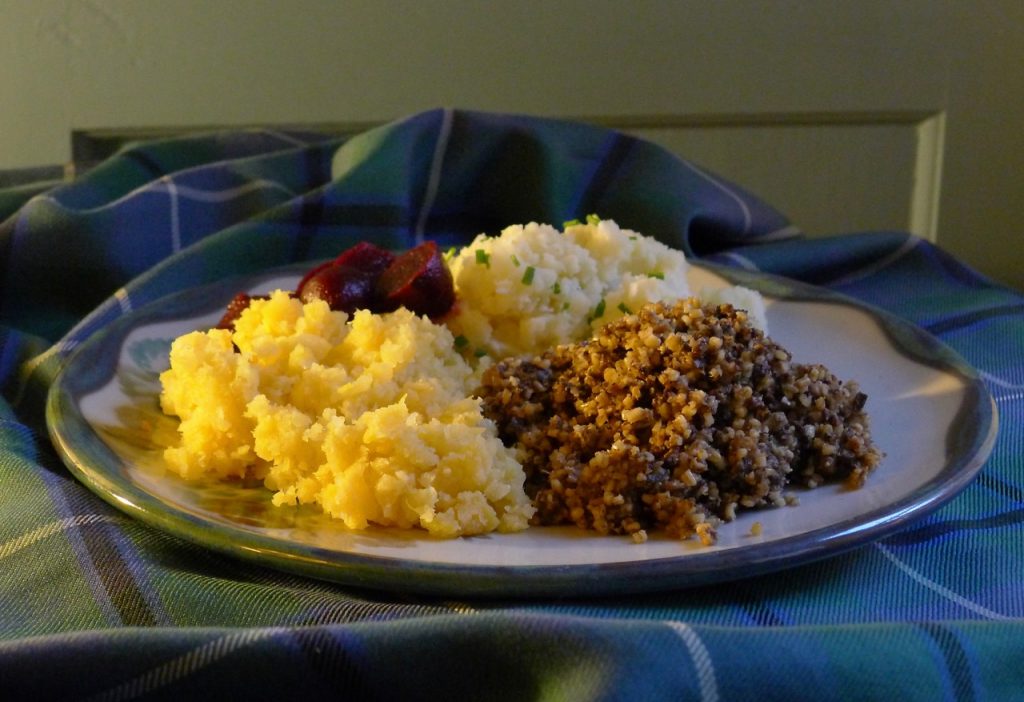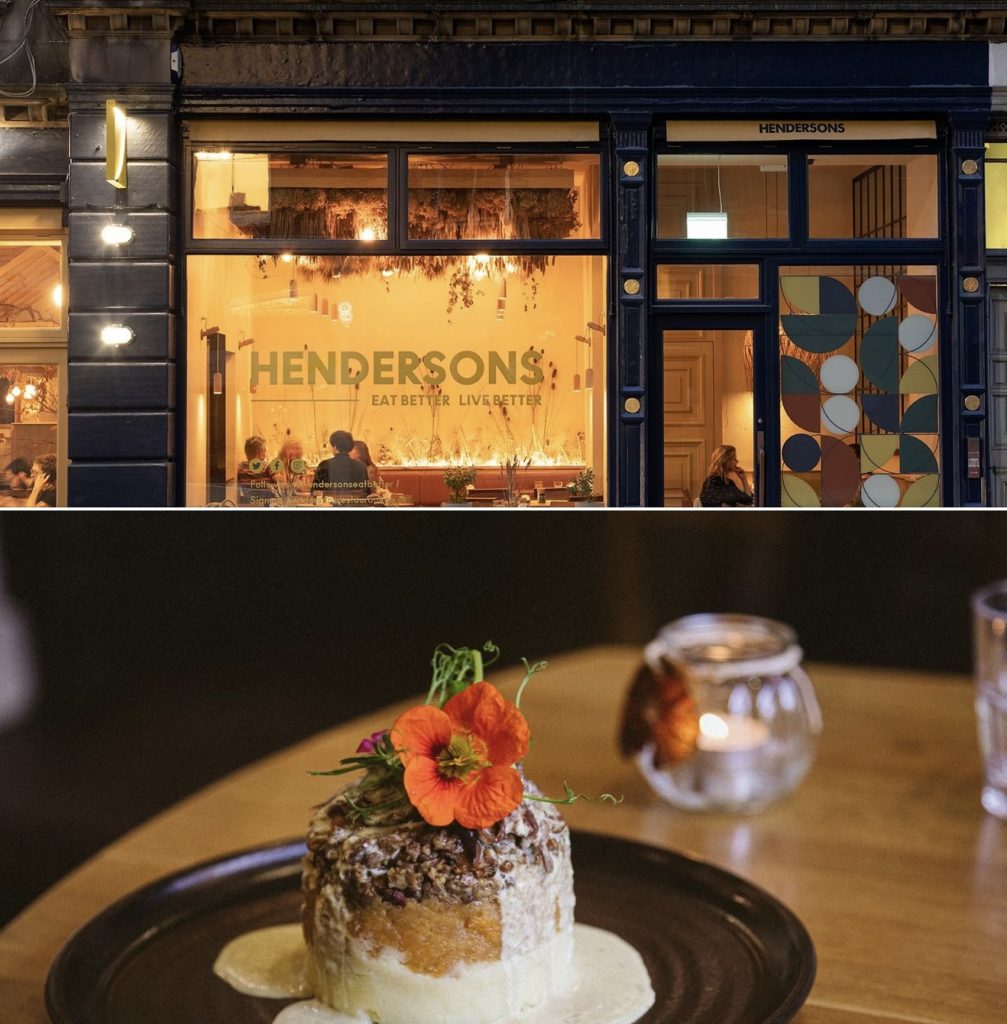[Including excerpts from “Meadows: The Swedish Farmer & The Scottish Cook”]

Describing certain traditional specialities can be challenging: my Dad once described oatcakes as porridge cookies… but haggis, is an altogether different beastie. When Burns wrote his ‘Address to the Haggis’ in 1786 the deed was done and the rest is history, with Burns suppers celebrating the bard the world over.
The origins of haggis are contested but we support the Scandinavian theory, based on pretty good evidence. For over ten thousand years Scotland has had strong associations with the Nordic countries; granted not always friendly but nevertheless many settled and trade followed. Indeed during part of these ancient times you could even walk between the two landmasses over Doggerland, flooded around 6,200BC. Scandinavia has long had a similar tradition of a dish exactly like haggis, hackas meaning to chop up in Swedish (although they call the actual dish pölsa) and similarly Norway have hakkemat .

We generally think of haggis as sheep-based however there is no doubt that it would be made with whatever they had to hand. After a good day’s hunting, venison would be used but just as likely beef, pig or goat. Haggis is made with the pluck (offal) – liver, heart, lungs, kidneys – minced with onion, oatmeal, suet, spices and salt, bound together with the meat’s cooking liquor and traditionally encased in the animal’s stomach bag, ‘maw’ or ‘paunch’ and boiled. As offal is highly perishable it made sense to consume it first as a high-energy food in a cold climate.

Nowadays we take spices for granted but in bygone days they would certainly have seasoned with what was available, likely using horseradish – the pepper of the north – wild caraway, sea salt, marjoram or sweet cicely. There was also local sea salt to be had. Nowadays Blackthorn Salt resides on Saltpans Road, a sure indicator of Ayr’s salty heritage!

Traditionally we serve haggis with clapshot, a combined mash of turnips and potatoes. In ancient times Scots would have eaten wild brassicas and it was the Swedes who commercialised the neeps we know today – easy to store, frost-proof (as opposed to our smaller white turnips), and a nourishing food for both animals and humans. Tumshies or neeps for haggis are the yellow variety of Swedish turnip, known as swedes, a cross between a cabbage and a turnip, starting life in the mid 17th Century on farmland that today is part of Finland – a hardy brassica perfect for growing in Scotland. Scotland is world famous for its ‘clean’ potatoes so check out The Potato House for fine heritage tatties, from now onwards, for growing and for eating.
For your Burns Supper, Scottish Food Guide has a fantastic range to select from:
Hardiesmill haggis with their Native Bred Aberdeen Angus, on Slow Food Ark of Taste;
Orkney Boreray haggis, Slow Food Presidium, limited edition from Macbeths;
And across our bonnie nation where haggis roam, there are also the organic Peelham Farm, Ramsays Gold Taste Award, Lawsons’ 2 star gold award haggis… and Elchies goat haggis

Should you be seeking a vegetarian alternative, look no further than Henderson’s, still following founder Janet Henderson’s original family recipe. They are hosting this year’s Slow Food Edinburgh’s Burns Supper (a few tickets left if you’re quick & non members welcome too) or you can buy as a takeaway for a vegetarian option at home.
So whether you are supporting Scottish chefs (of which there are many Burns Suppers to choose from on this link) or celebrating at home, be sure to sing songs, recite a poem and don the tartan. Wishing you a braw nicht from Scottish Food Guide.
Note: title image is members of Haddington Pipe Band, entertaining visitors at Challans Foires des Minées Festival, France, where Scottish Food Guide was invited to create a “Scottish village” a few years ago.



